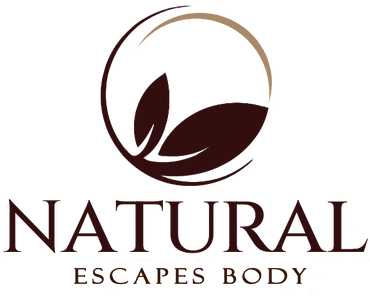Sodium Cocoyl Alkyl Esters: Gentle Amino Acid Surfactants
Quick Facts
Botanical / Chemical Name: Sodium Acyl Amino Acid Salts
INCI Name: Various (Sodium Cocoyl Isethionate, Sodium Cocoyl Glutamate, Sodium Cocoyl Glycinate, etc.)
Extract Type: Coconut oil-derived surfactants combined with amino acids
Main Benefits: Gentle cleansing, mild surfactant, foam stabilizer, conditioning, sulfate-free
Best Uses: Shampoos, body washes, baby care, sensitive skin cleansers, syndet bars
Overview
Sodium Cocoyl Alkyl Esters are a family of coconut oil-derived surfactants combined with amino acids or similar organic compounds to deliver gentle yet effective cleansing. Examples include Sodium Cocoyl Isethionate, Sodium Cocoyl Glutamate, and Sodium Cocoyl Glycinate. These mild, biodegradable ingredients were developed as safer, sulfate-free alternatives that protect the skin barrier, create creamy foam, and support sensitive and baby skin formulations. Their biomimetic nature makes them especially compatible with skin, offering cleansing power without harshness.
What the Science Says
- Comparative irritation studies show Sodium Cocoyl Isethionate has a significantly lower irritation index than sulfates like SLS[1].
- Barrier studies demonstrate minimal transepidermal water loss (TEWL) with sodium cocoyl derivatives compared to conventional surfactants[2].
- Foam quality research confirms that these esters produce dense, creamy, and stable foam, improving user experience[3].
- Biodegradability studies confirm rapid environmental breakdown within 28 days, with low aquatic toxicity[4].
Key Nutrients / Compounds
- Coconut oil fatty acids: Provide the cleansing backbone with gentle removal of oils and impurities.
- Amino acid head groups: Glutamate, glycinate, isethionate, or apple amino acids add mildness and conditioning.
- Sodium salt form: Increases solubility and helps maintain skin-friendly pH.
- Foam stabilizers: Contribute to rich, stable, and creamy foam.
Skin Benefits
- Ultra-mild cleansing that supports the skin barrier
- Maintains hydration and softness while cleansing
- Suitable for sensitive, eczema-prone, or compromised skin
- Maintains natural pH balance and healthy microbiome
Hair & Scalp Benefits
- Provides gentle yet effective cleansing for scalp
- Supports scalp barrier health and reduces dryness
- Produces creamy lather ideal for sulfate-free shampoos
- Safe for daily use on all hair types, including color-treated
Why Natural Escapes Body Uses It
We use Sodium Cocoyl Alkyl Esters in our cleansing products for their gentle yet effective performance. In shampoos, body washes, and baby-safe formulas, they provide creamy foam, effective cleansing, and skin barrier support—all without the harshness of sulfates. Their natural coconut origin and biodegradable profile align with our mission of safe, eco-friendly skincare.
Products Featuring This Ingredient
- Shampoos
- Body washes
Safety Notes
- Comedogenic rating: 0 (non-comedogenic)
- Dermatologist-tested and safe for sensitive and baby skin
- Pregnancy and breastfeeding safe
- Fully biodegradable and environmentally friendly
- Patch testing recommended for highly sensitive individuals
FAQs
Is Sodium Cocoyl Alkyl Esters safe for sensitive or eczema-prone skin?
Yes. These amino acid-based surfactants are among the gentlest available and are widely used in baby and sensitive skin products.
Do Sodium Cocoyl Alkyl Esters cause acne or clog pores?
No. They are non-comedogenic and do not clog pores, making them suitable for acne-prone and oily skin.
Can people with coconut allergies use Sodium Cocoyl Alkyl Esters?
Because they are derived from coconut oil, individuals with coconut allergies should consult a dermatologist before use, though reactions are rare.
Are Sodium Cocoyl Alkyl Esters considered natural?
They are derived from renewable coconut oil and amino acids, and while processed, they are widely accepted in clean and natural formulations.
Do they foam well compared to sulfates?
Yes. They create a rich, creamy, and stable foam without the harshness of sulfates, making them a popular sulfate-free alternative.
What concentrations are safe and effective?
They are typically used at 10–50%, depending on the variant and product type. At these levels they are both effective and safe for daily use.
Scientific References
- Amended Safety Assessment of Isethionate Salts as Used in Cosmetics. International Journal of Toxicology, 2017.
- Why is sodium cocoyl isethionate (SCI) mild to the skin barrier? - An in vitro investigation. Journal of Cosmetic Science, 2007.
- A Novel Glycinate-based Body Wash: Clinical Investigation Into Ultra-mildness. PMC, 2013.
- Green Surfactants (Biosurfactants): A Petroleum-Free Substitute for Sustainability. PMC, 2023.
- The science behind sulfate-free: New study identifies safer, greener alternatives. Cosmetics Design, 2025.
- Surfactant-containing detergents: Impacts on dermal health. ScienceDirect, 2025.
- Advantages of Amino Acid-Based Surfactants over Traditional Surfactants. Yeser Chemicals, 2023.
- Amino Acid Surfactants: Gentle, Environmentally Friendly & Effective. GGs Natureceuticals, 2023.
- Aminoacid Surfactants Encyclopedia. MDPI, 2023.

